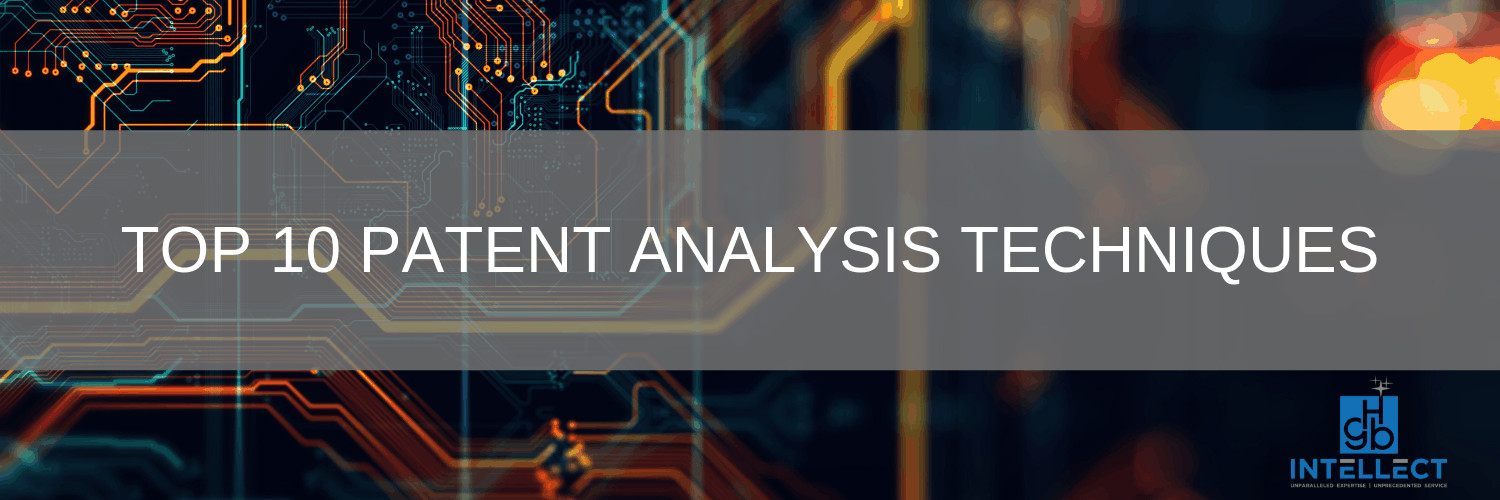Understanding Patent Analysis Techniques
There is a difference between a patent’s legal analysis and it’s technical analysis. Although this article may highlight some of the legal analysis from a very high level, GHB Intellect provides technology- and business-focused consultancy and does not offer accounting, tax, investment or legal advice, analysis, or representation.
Patent analysis techniques can be difficult to prioritize as they require experience. Those undertakings are nearly impossible without training, tools and the proper techniques. Many enterprises understand how to utilize algorithmic thinking, big data, and data analytics for patent analysis. During the patent application, evaluating prior art is essential and may provide innovative steps associated with a particular invention.
When these references are discovered, they need to be cited in different publication stages. Any patent citations have to begin with a root document. Citations are a representation of the relationships between two or more inventions. Analysts must take a comprehensive approach to their patent analysis search to identify influential portfolios.
Concluding a definite patent in some fields can be a difficult task. It requires an expert to review complex documents, which makes it even more difficult. The technical barriers and high cost of patent analysis are declining progressively.
A WIPO report “http://www.wipo.int/wipo_
What Does Patent Analysis Achieve?
There are so many flavors that represent patent landscapes, from reports like WIPO to 3D relief maps and a combination of various analyses. The most important thing, however, is the reason why you want to do patenting in the first place. The patent landscape is done to understand the following:
- Understand the present and future IP technologies and products that are important to your business.
- To understand technology players and their strengths in IP patents.
- Discover areas for Freedom-to-operation (FTO) and patentability
- Understand your IP ecosystem: I.E. partners, competitors, and potential acquisition.
- To track the evolution of landscapes to IP developments.
The Key Patent Analysis Techniques & Elements
To adapt well with any patent analysis techniques, you need the push to start. Becoming an educated consumer of patent landscapes will arm you with all the knowledge you need. The key aspects of patent analysis techniques include:
- The model is easy to build
- It iterates with the content of your heart
- Build acclaim IP if it enhances knowledge extraction
- It is easy to digest and creates your inquiries.
- It gives transparency between the user and data
- You can easily apply knowledge of products and integrate other people into your analysis
3D relief maps help a lot in the conceptualization and understanding the technology and categories of a particular group of patents. They may use clusters to show their similarity and closeness. They are essential in giving analysts a feeling of conceptual and technological areas that are represented in documents. However, they are known to put layers between users and data. Most of the time, 3D maps are misunderstood. There are so many free patent searches tools such as USPTO database, Google Patent Search, free patents online, Patbase, and Orbit.com.
Patent Search Techniques
Every patent database has unique features that can be helpful. It is crucial to start with searching keywords that don’t look obvious. The keywords used may be related to the purpose of your invention. It is also essential that you learn the different classes and subclasses of the system. The United States alone, for instance, has over 150,000 subclasses. Before searching for a patent, it is essential to know your main competitors. It will make it easy to search for the patents they own. It helps you to know whether your patent is likely to infringe the law.
Although search engines might be helpful and free, it is advisable to pay for patent databases. Patent databases for text mining that are paid to have more smart features. They also go back so many decades ago in their searches. You should always do a citation to patents that are related to yours to prevent any legal problems. It is easier to search for some patent database by example. It allows you to come up with the relevant documents. To make your work easier, you need to cluster all your search results into cluster groups. If you know how to carry out Boolean searches, it can be beneficial in coming up with more relevant results. The use of value indicators is also vital in patent analysis. It allows you to look at searches in different dimensions and identify missed information.
Text Mining Techniques for Patent Analysis
Most patent analysis, mapping and visualization tools utilize some sort of big data, text mining technology to either create a map or interactive platform for patent analysis. Here’s a comprehensive wiki from the patent information community. Text mining is comprised of the following:
- Document Preprocessing
- Collection Creation
- Document Parsing and Segmentation
- Text Summarization
- Document Surrogate Selection
- Indexing
- Keyword/Phrase Extraction
- Morphological Analysis
- Stopword Filtering
- Term Association and Clustering
- Topic Clustering
- Term Selection
- Document Clustering/Categorization
- Cluster Title Generation
- Category Mapping
- Topic Mapping
- Trend Map
- Query Map
- Aggregation Map
- Zooming Map
GHB Intellect Offers Patent Analysis Services
Patent analysis can be a difficult task if you are just a beginner. The effort to learn the best patent analysis techniques is, however worth, as it will give you the best platform to carry out the patent application. You can also hire or consult a professional searcher to help you find the vital patent details. Do you require patent analysis services? GHB Intellect offers premier patent portfolio analysis services. Other offered services include patent searching, application, management, and monetization.

